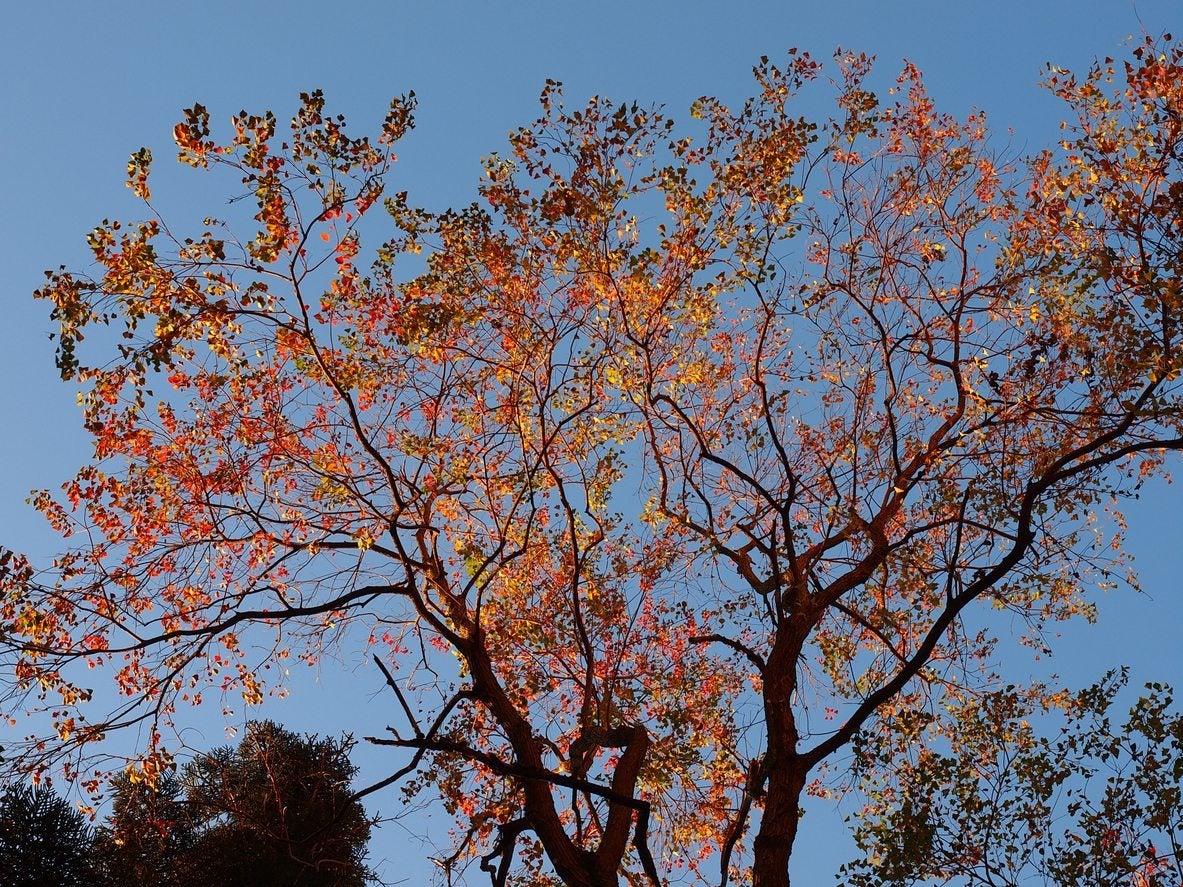What Is A Chinese Tallow Tree: How To Grow A Chinese Tallow Tree


If you have never heard of the Chinese tallow tree, you may well ask what it is. In this country, it’s seen as an ornamental shade tree, native to China and Japan, and popular for its spectacular fall color. In China, it’s cultivated for seed oil. For more Chinese tallow tree information, including tips on how to grow a Chinese tallow, read on.
What is a Chinese Tallow Tree?
Although Chinese tallow trees (Triadica sebifera) are becoming more popular in this country, not everyone has heard of them or seen them. This deciduous tree puts on a magnificent autumn display. Before the leaves drop in fall, they turn from green to beautiful shades of red, gold, orange, and purple. The tree can grow with a single trunk or with several trunks. It is an erect trunk, and the oval canopy is low and spreading. It can grow to 40 feet (12 m.) tall and almost as wide. It can shoot up at a rate of 3 feet (1 m.) a year and can live up to 60 years. Chinese tallow blossoms are small and yellow, borne on 8 inches (20 cm.) spikes. They attract bees and other insects and are followed by fruit: three-lobed capsules containing seeds covered with a white waxy coating. According to Chinese tallow tree information, it grows in U.S. Department of Agriculture plant hardiness zones 8 through 10. It is a thirsty tree and Chinese tallow care includes regular and adequate irrigation.
How to Grow a Chinese Tallow
If attempting to grow a Chinese tallow, expect a moderate amount of maintenance. Plant the seedling in a sunny location, or at least one that gets partial sun. Chinese tallow care involves providing regular water. The tree requires moist soil for fast growth. Don’t worry about the soil texture. The tree accepts clay, loam, or sandy soil, although it prefers acidic pH over alkaline. If you are concerned about Chinese tallow invasiveness, you are not alone. The tree reseeds readily in moist areas and is considered invasive in some regions. Good Chinese tallow care involves keeping your plant from spreading to neighbor’s yards or wild areas.
Gardening tips, videos, info and more delivered right to your inbox!
Sign up for the Gardening Know How newsletter today and receive a free copy of our e-book "How to Grow Delicious Tomatoes".

Teo Spengler is a master gardener and a docent at the San Francisco Botanical Garden, where she hosts public tours. She has studied horticulture and written about nature, trees, plants, and gardening for more than two decades. Her extended family includes some 30 houseplants and hundreds of outdoor plants, including 250 trees, which are her main passion. Spengler currently splits her life between San Francisco and the French Basque Country, though she was raised in Alaska, giving her experience of gardening in a range of climates.
-
 Looking For Plants To Give You The Soft And Fuzzies? Try These 5 Fuzzy Leaf Plant Options
Looking For Plants To Give You The Soft And Fuzzies? Try These 5 Fuzzy Leaf Plant OptionsLovers of texture, drama, silver foliage and tactile plants will adore these special sensory garden additions. These fuzzy leaf plant options will leave you all aglow
By Susan Albert
-
 Get Ready For A Summer Of Hummers! Grow These Full Sun Hummingbird Plants and Flowers
Get Ready For A Summer Of Hummers! Grow These Full Sun Hummingbird Plants and FlowersIf you’re lucky enough to enjoy a sunny backyard, make sure you are maxing out on your pollinator opportunities and grow these full sun hummingbird plants and flowers
By Tonya Barnett